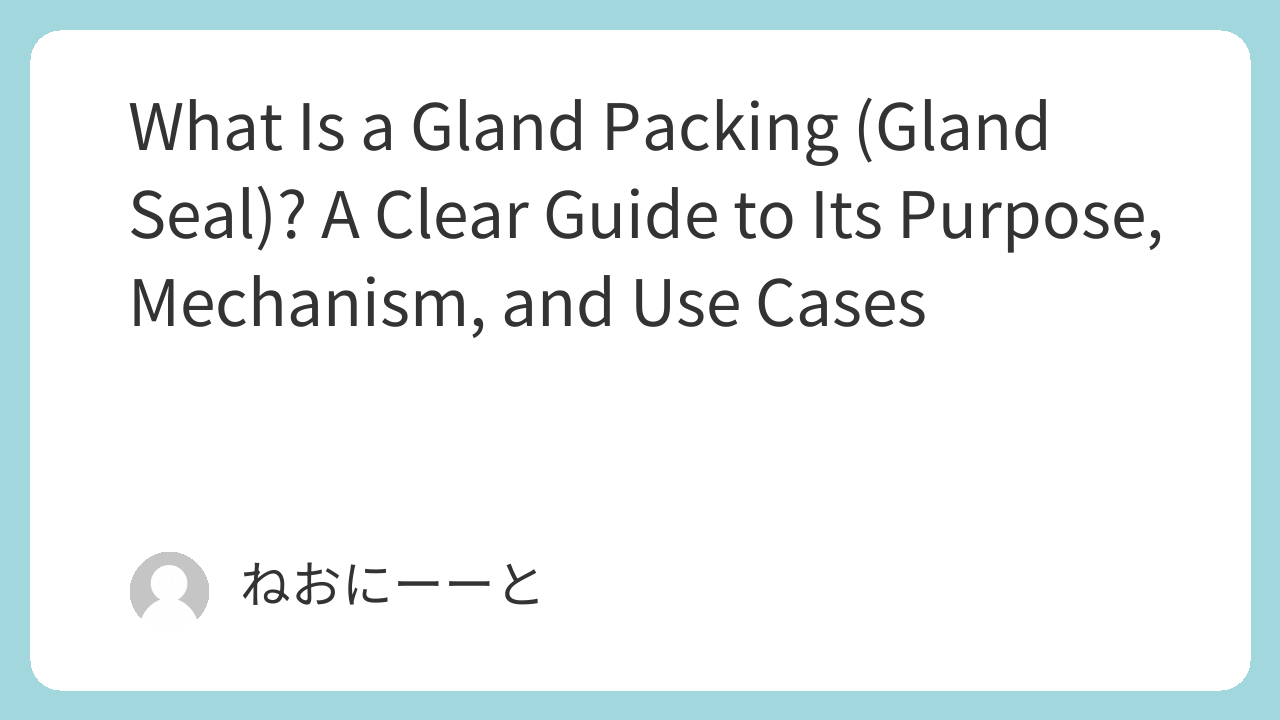Have you ever seen the term “gland packing” or “gland seal” in chemical plant diagrams or equipment lists and wondered what it means?
Though small and often overlooked, gland packings play a critical role in ensuring operational stability and safety by preventing gas leaks and backflow.
While modern mechanical seals are often favored, gland packing remains a relevant and time-tested sealing method, especially where simplicity, cost-efficiency, or specific operating conditions are prioritized.
This article provides a beginner-friendly explanation of the principle, purpose, structure, and practical use of gland seals—especially in chemical processing applications.
Essential Guide to Mechanical Seal Support Systems in Chemical Plants
Why Mechanical Seals Leak in Pumps — and How to Fix It
Top 3 Mechanical Seal Flushing Plans Explained (API 682 Standards)
📘 Summary of Contents (for Table of Contents or Preview Snippet)
- What Is Gland Packing (Gland Seal)?
- The Role of Lantern Rings
- Cooling and Leakage: How It Works
- Where Gland Packings Are Used
- Why and When to Avoid Them
- Comparison with Mechanical Seals
- Best Practices and Common Mistakes
🧠 Main Article Summary
Gland packing, a classic sealing technique, is used in rotating equipment like pumps, agitators, and valves. It involves rings made of braided fibers (e.g., graphite, aramid, PTFE) compressed inside a stuffing box to reduce or prevent leakage.
A common configuration includes multiple packing rings + a lantern ring, which introduces cooling water or inert gas (like nitrogen) to prevent overheating or particle intrusion.
Key principles:
- Only one packing ring typically creates the actual seal; the others serve as backups.
- Cooling water is essential due to friction heat.
- Leakage is expected—it’s part of the design—but must be controlled.
Use cases include:
- Pump shaft sealing (especially for water systems)
- Agitator sealing in tanks
- Fan shaft and valve stem sealing
- Situations where maintenance access is frequent and leakage is tolerable
However, gland packing is less efficient and more maintenance-heavy than mechanical seals. Downsides include:
- Cooling water dependency
- Greater leakage
- Higher energy loss due to friction
✅ Conclusion
Gland packing (or gland seals) might seem like outdated technology, but they continue to play a valuable role in the right settings—especially where cost, simplicity, and moderate sealing needs intersect.
Key Takeaways:
- Function: Gas/liquid sealing by pressure and friction
- Structure: Multi-layer braided rings, sometimes with a lantern ring
- Application: Pumps, fans, agitators, valves
- Watch-outs: Leakage, water requirements, energy loss
Understanding gland packing helps ensure smarter equipment design, safer operations, and better maintenance planning in chemical plants and beyond.

Comments